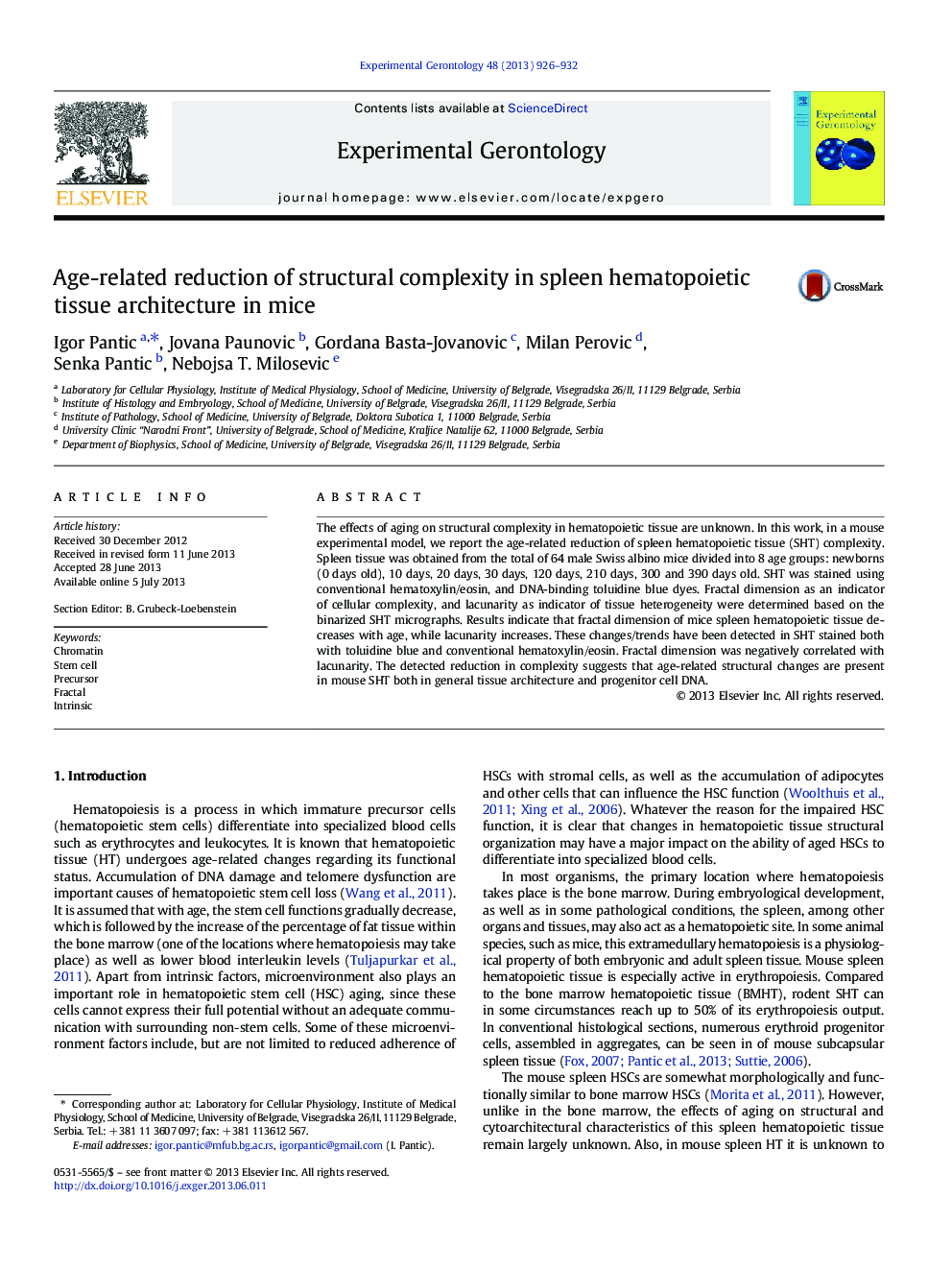| Article ID | Journal | Published Year | Pages | File Type |
|---|---|---|---|---|
| 10736959 | Experimental Gerontology | 2013 | 7 Pages |
Abstract
The effects of aging on structural complexity in hematopoietic tissue are unknown. In this work, in a mouse experimental model, we report the age-related reduction of spleen hematopoietic tissue (SHT) complexity. Spleen tissue was obtained from the total of 64 male Swiss albino mice divided into 8 age groups: newborns (0Â days old), 10Â days, 20Â days, 30Â days, 120Â days, 210Â days, 300 and 390Â days old. SHT was stained using conventional hematoxylin/eosin, and DNA-binding toluidine blue dyes. Fractal dimension as an indicator of cellular complexity, and lacunarity as indicator of tissue heterogeneity were determined based on the binarized SHT micrographs. Results indicate that fractal dimension of mice spleen hematopoietic tissue decreases with age, while lacunarity increases. These changes/trends have been detected in SHT stained both with toluidine blue and conventional hematoxylin/eosin. Fractal dimension was negatively correlated with lacunarity. The detected reduction in complexity suggests that age-related structural changes are present in mouse SHT both in general tissue architecture and progenitor cell DNA.
Related Topics
Life Sciences
Biochemistry, Genetics and Molecular Biology
Ageing
Authors
Igor Pantic, Jovana Paunovic, Gordana Basta-Jovanovic, Milan Perovic, Senka Pantic, Nebojsa T. Milosevic,
